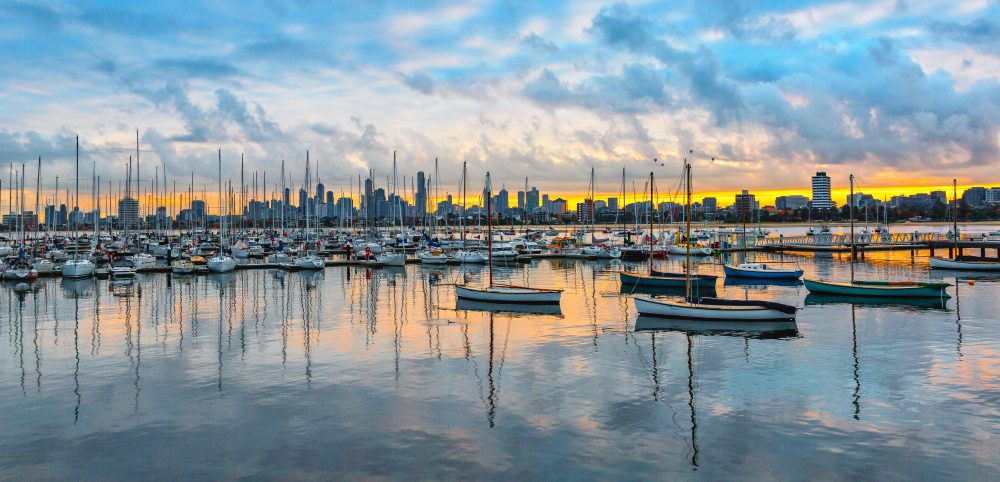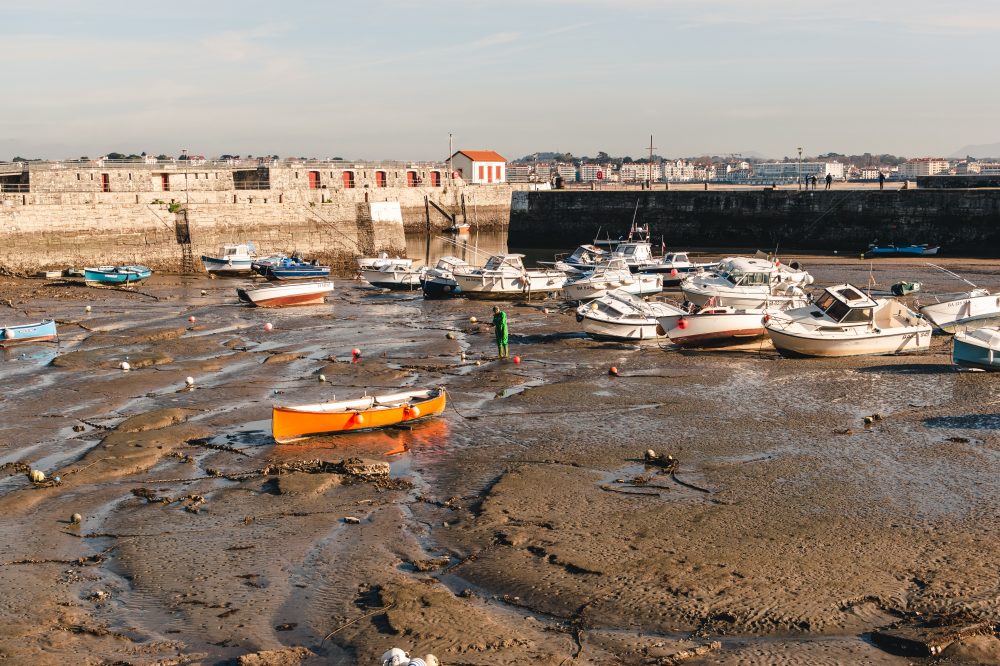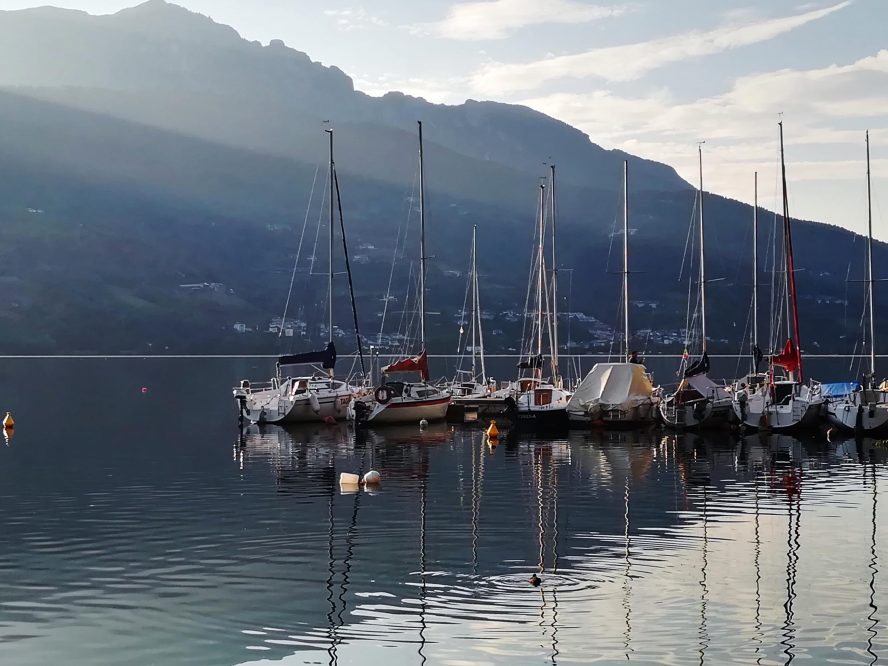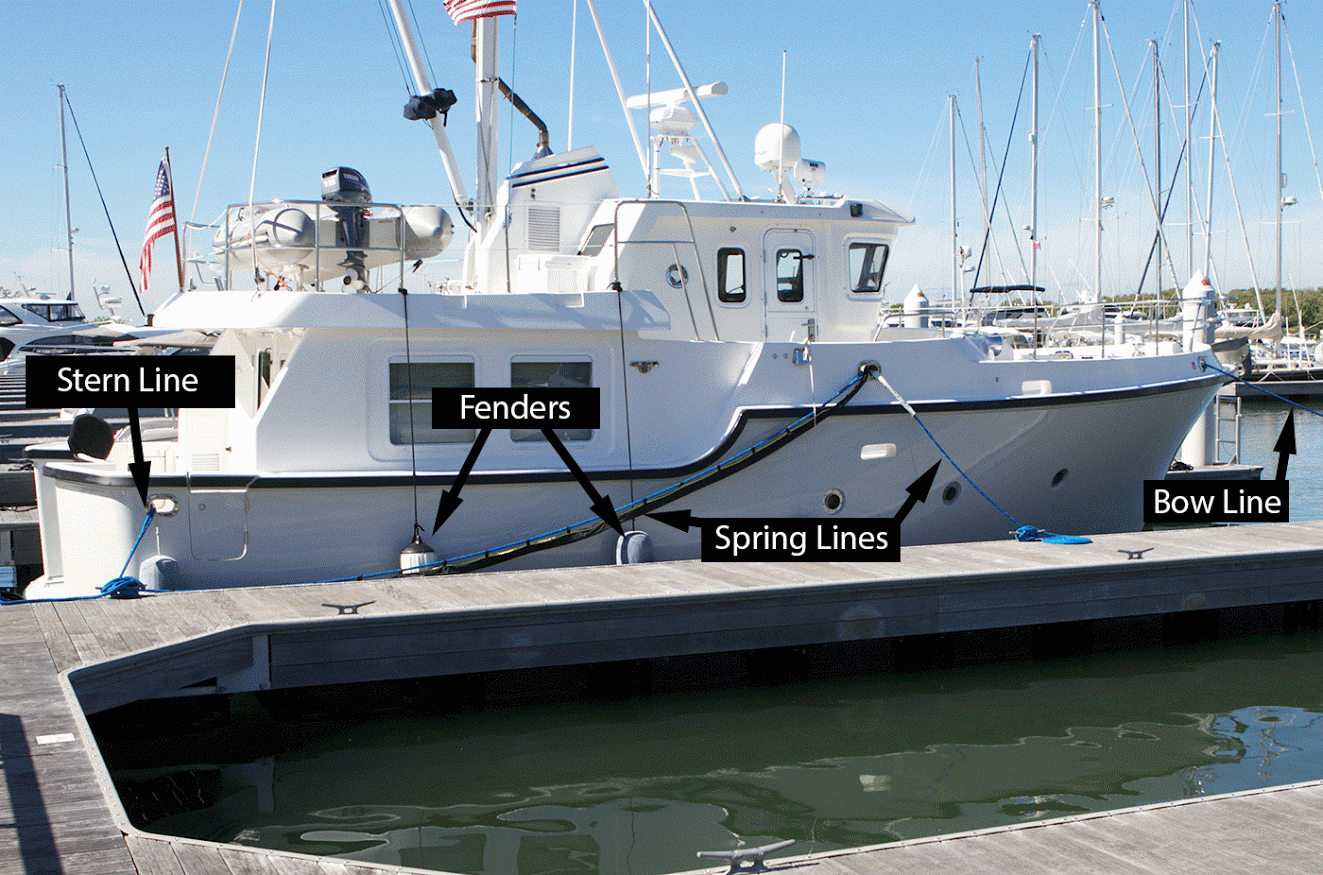The Basics of Mooring
If you’re new to boating, you may have heard the term “mooring” thrown around. Here we cover the basics of moorings and their primary functions.
If you’re new to the world of boating, you may have heard the term “mooring” thrown around in conversation. Mooring is not a term that many people use outside of the industry, so you’re not the only one out there who’s fuzzy on the subject. A mooring is any type of permanent or semi-permanent anchoring system on the water to which a boat can be safely secured. Typically, it also requires a tender vessel or dinghy access. Here we cover the basics of moorings and their primary functions.

Mooring Versus Docking
When looking out towards a marina, you'll probably see a handful of boats pulled up along the docks. Then, you'll notice other boats in designated slips, maybe for the night, the winter, or permanently. The advantages of a slip are numerous — they provide easy access to land, a water and power hookup, and shelter from storms and choppy seas.
Since the amount of dockage space each marina can offer is finite, most marinas have mooring spaces further out on the water as a cheaper option for parking and storing a boat. Moorings are also necessary for boats with lengths or drafts too large for the shallow waterways of the inner marina.
Instead of pulling right up to the dock like you would with a slip, when using a mooring, boaters attach lines from the bow to the buoy and chain. The mooring functions like an anchor, securing the boat in place. Moorings are usually organized by size. You can find the moorings with heavier weights, anchors, chains, and additional space for larger boats on outside edges of the harbor. Boaters use personal or public tenders and a complimentary water taxi or shuttle service to reach the shore from their boats while out on the moorings. Just be sure to check with the marina first on which moorings are available and are the right size for your boat.

Mooring Types
The right type of mooring for your boat depends on the strength needed to balance the boat's size and the condition of the water. While a small concrete block may suffice for a smaller boat in calm waters, this would probably not hold up in a storm. A mushroom mooring can provide added strength and support. For even more security, you can find helical anchors that screw into the floor of the body of water to keep your vessel anchored during the roughest of conditions.
Proper Weight
The proper weight for your boat mooring depends on factors like the type of mooring, the underwater landscape, water depth, weather conditions, and the weight and length of the vessel. As a general guideline, mushroom moorings on soft, sandy bottoms in protected harbors should weigh between five and ten times the vessel's length. It's a good idea to contact the harbor or marina where you are placing your mooring for more insight when choosing the mooring weight and type.

Personal Moorings
Installing a mooring at your local landing is a great alternative for boaters who don't have access to a dock or don't want to pay the hefty price tag attached to slips at a local marina. Personal moorings are affordable and allow you to keep your boat in the water, ready to go all season long.
Before putting in a mooring, you’ll want to research mooring rules in your area and contact your local harbormaster about specific requirements. Most cities and states have mooring restrictions and location guidelines. Usually, you will have to register the mooring and boat. Then, local officials will give you a tag to place on the buoy to identify it as yours in accordance with local regulations.
Choosing the Right Location for Your Mooring
When choosing a location for your mooring, avoid areas with rocky bottoms. Instead, look for a space with a soft bed so that your mooring can settle in securely. The ideal mooring spot has some protection from waves, wind, and other elements. You'll want to ensure that you have a way to get on and off your boat after it's moored. Also, make sure that you are not encroaching on other moored boats, mooring fields, or channels of boat traffic. In areas where tides come into play, consider whether your boat will have adequate water during the low tide and an adequate chain length for support at high tide.
Moorings are a great alternative to docking, providing a cheaper and easier way to store your boat in the water, short or long term. Whether you're a veteran boater or just getting on the water, moorings are simple to navigate once you've got a handle on the basics. Using a mooring during hurricane season? Check out these tips for hurricane prep.












